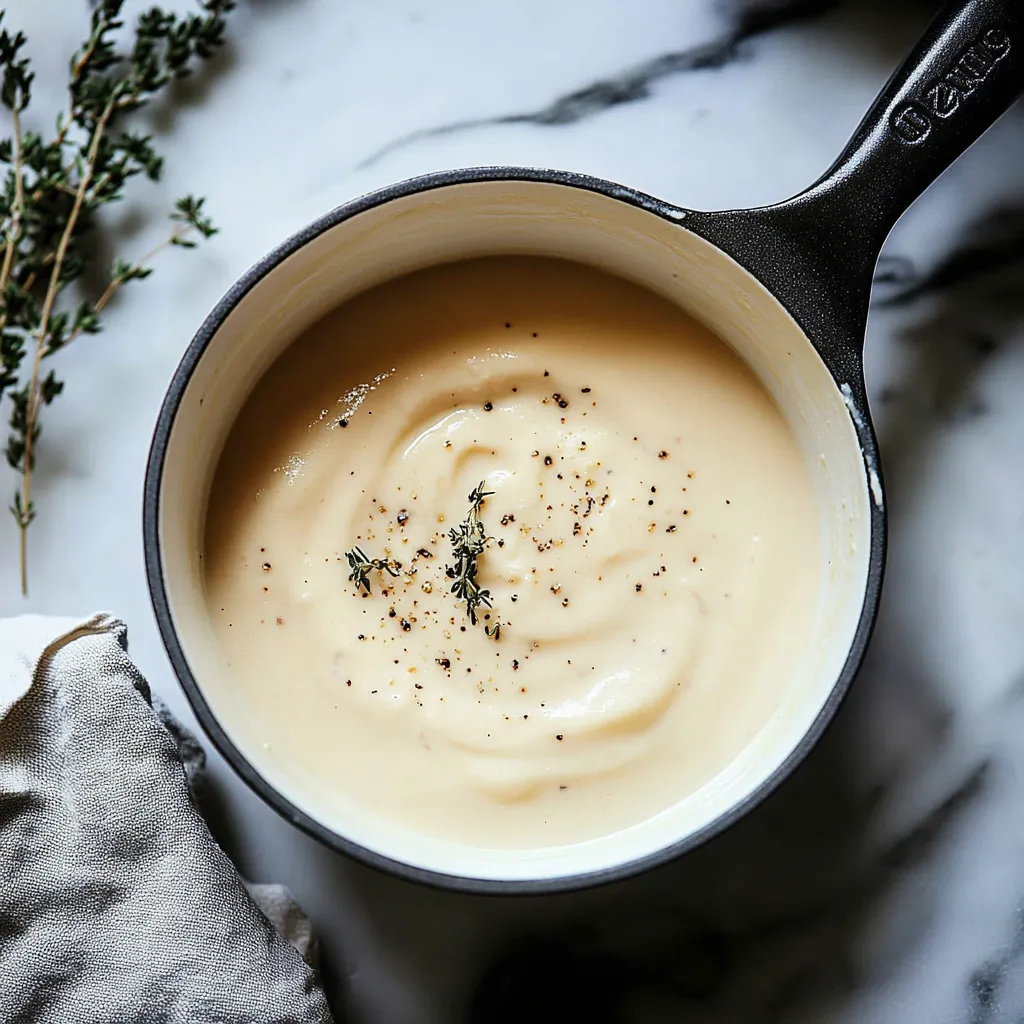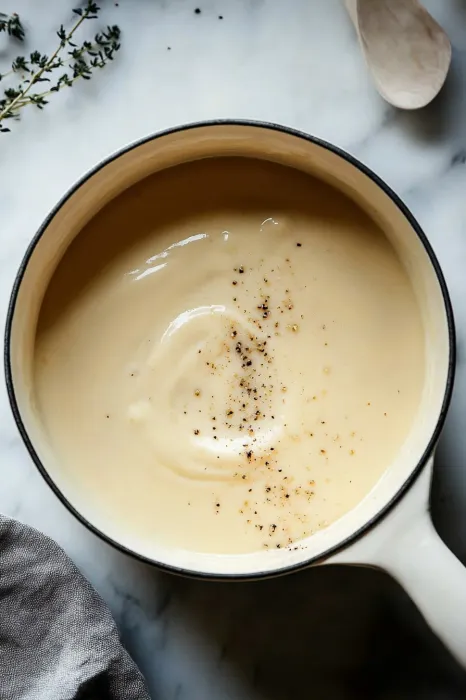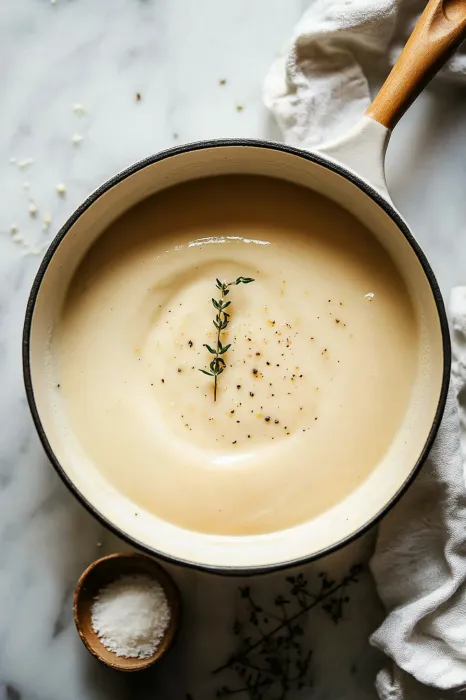 Pin it
Pin it
This creamy white sauce, known as bechamel, is a French classic that serves as the perfect base for countless other sauces. With just a handful of ingredients, this basic version delivers a silky, versatile sauce that transforms ordinary dishes into something special.
I discovered the magic of homemade bechamel when I was trying to elevate my lasagna game. After years of using jarred sauces, the difference was remarkable my family immediately noticed the richer, more complex flavor that only comes from scratch cooking.
Ingredients
- Whole milk: Brings the perfect richness and creates that silky texture essential for a proper bechamel
- Unsalted butter: Allows you to control the salt level while providing necessary fat for the roux
- All purpose flour: Acts as the thickening agent and creates the foundation of your sauce
- Salt: Enhances all the flavors choose a fine sea salt for the best results
- White pepper: Adds subtle warmth without visible specks that black pepper would leave
- Ground nutmeg: This optional ingredient is traditional in French cooking and adds a barely perceptible warmth
Step-by-Step Instructions
- Prepare the Milk:
- Gently warm two cups of milk in a small saucepan over low heat. The key here is patience do not rush this step by turning up the heat or you risk scorching the milk. The milk should be warm but not boiling when added to your roux.
- Create the Roux:
- Melt four tablespoons of butter in a separate medium saucepan over medium heat until it begins to foam slightly. Add your quarter cup of flour all at once and immediately begin whisking. The mixture will quickly form a paste this is your roux. Continue whisking and cooking for about two minutes to cook out the raw flour taste while carefully maintaining a blonde color.
- Combine with Care:
- This is the critical moment where your sauce takes shape. Begin adding the warm milk to your roux in a slow, steady stream while whisking constantly. Adding it gradually prevents lumps from forming. The first additions will create a very thick mixture but continue adding milk and whisking until all is incorporated.
- Develop the Sauce:
- Cook the sauce over medium low heat for about 5 to 7 minutes, stirring frequently with your whisk or wooden spoon. Watch as the sauce gradually thickens to coat the back of a spoon. The key indicator of proper thickness is when you can draw your finger through the sauce on the back of a spoon and it leaves a clear path.
- Season Perfectly:
- Add your quarter teaspoon of salt, eighth teaspoon of white pepper, and optional pinch of nutmeg. Stir well to distribute the seasonings evenly throughout the sauce. Taste and adjust if needed remember that if this sauce is going into another dish, you may want to slightly underseason.
 Pin it
Pin it
The quality of your butter makes a noticeable difference in this simple sauce. I once splurged on European style butter with higher fat content for a special dinner party, and guests actually commented on how exceptional the sauce tasted in my chicken and mushroom crepes.
Mastering the Perfect Consistency
The ideal bechamel should coat the back of a spoon but still flow smoothly. If your sauce becomes too thick, simply whisk in additional warm milk a tablespoon at a time until you reach the desired consistency. Conversely, if your sauce is too thin, continue cooking it longer to allow more moisture to evaporate. The sauce will also thicken slightly as it cools, so keep this in mind when judging the final texture.
Troubleshooting Lumps
Even experienced cooks occasionally end up with lumps in their bechamel. If this happens, don't panic. For minor lumps, vigorous whisking might solve the problem. For more stubborn lumps, strain the sauce through a fine mesh sieve before serving. To prevent lumps in the first place, ensure your roux is smooth before adding any milk, and add the warm milk gradually while whisking constantly.
Flavor Variations
While this basic recipe creates a wonderful classic bechamel, you can easily customize it to suit various dishes. For an onion infused version, simmer half an onion studded with two cloves in the milk before straining and proceeding with the recipe. For a cheese sauce, simply stir in about a cup of grated cheese off the heat. Add fresh herbs like thyme or bay leaves during cooking, then remove before serving for subtle aromatic notes.
 Pin it
Pin it
Frequently Asked Questions
- → What is white sauce commonly used for?
White sauce, or bechamel, is used as a base for pasta dishes, gravies, casseroles, or creamy soups.
- → Can I make this sauce gluten-free?
Yes, replace all-purpose flour with gluten-free flour or cornstarch for a gluten-free option.
- → How do I prevent lumps in the sauce?
Gradually add warm milk to the roux while whisking continuously to create a smooth texture.
- → Can I store white sauce for later use?
Yes, store it in an airtight container in the refrigerator for up to two days. Reheat gently and whisk to restore the texture.
- → What can I substitute for whole milk?
You can use 2% or skim milk for a lighter sauce, but it may be less creamy. Non-dairy alternatives can also work.
